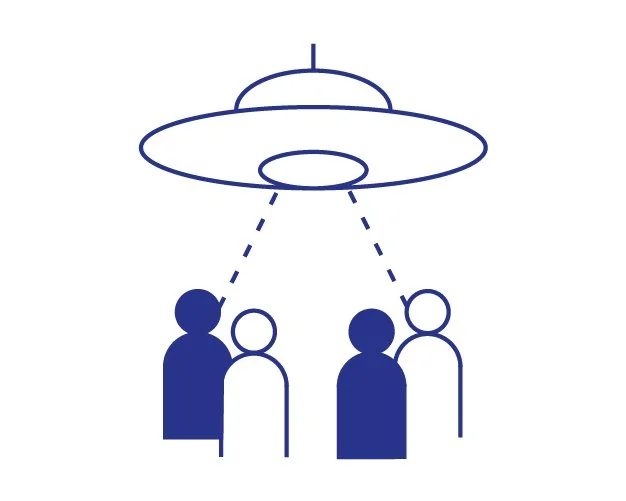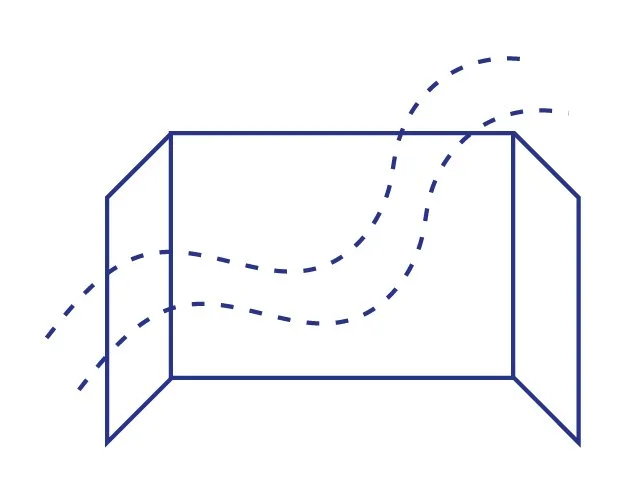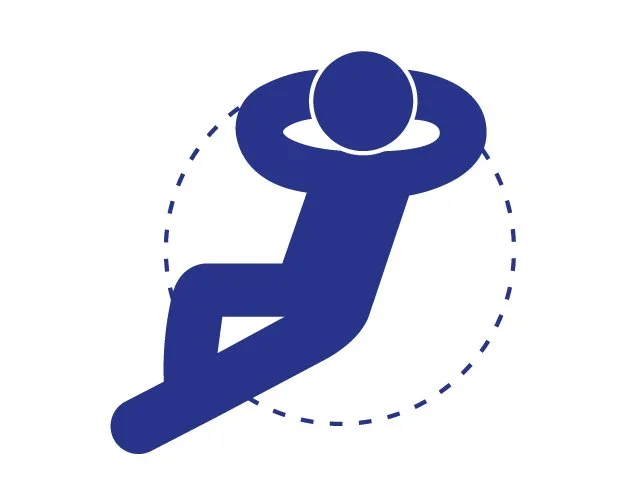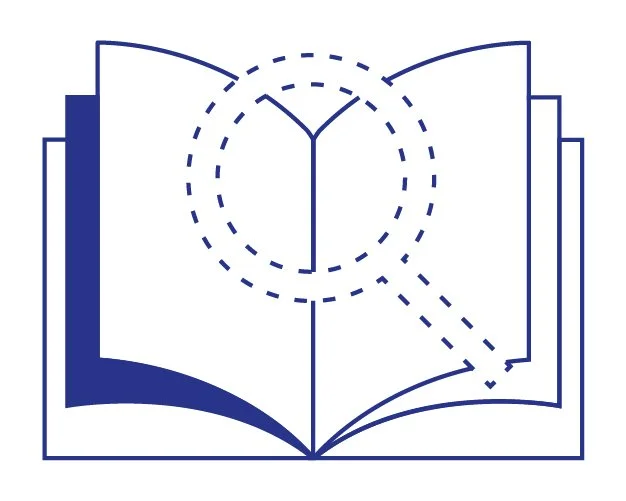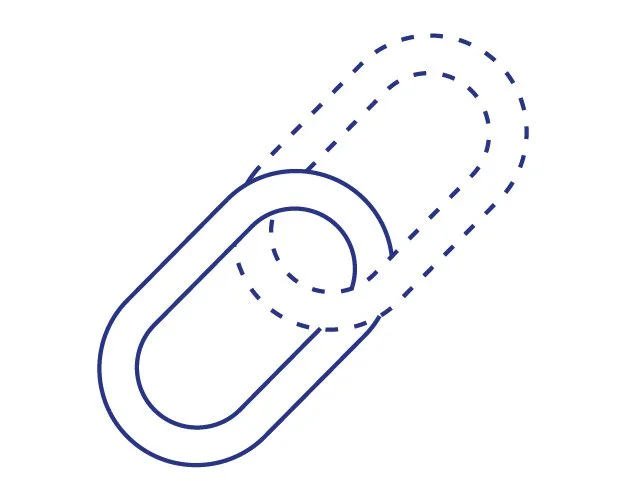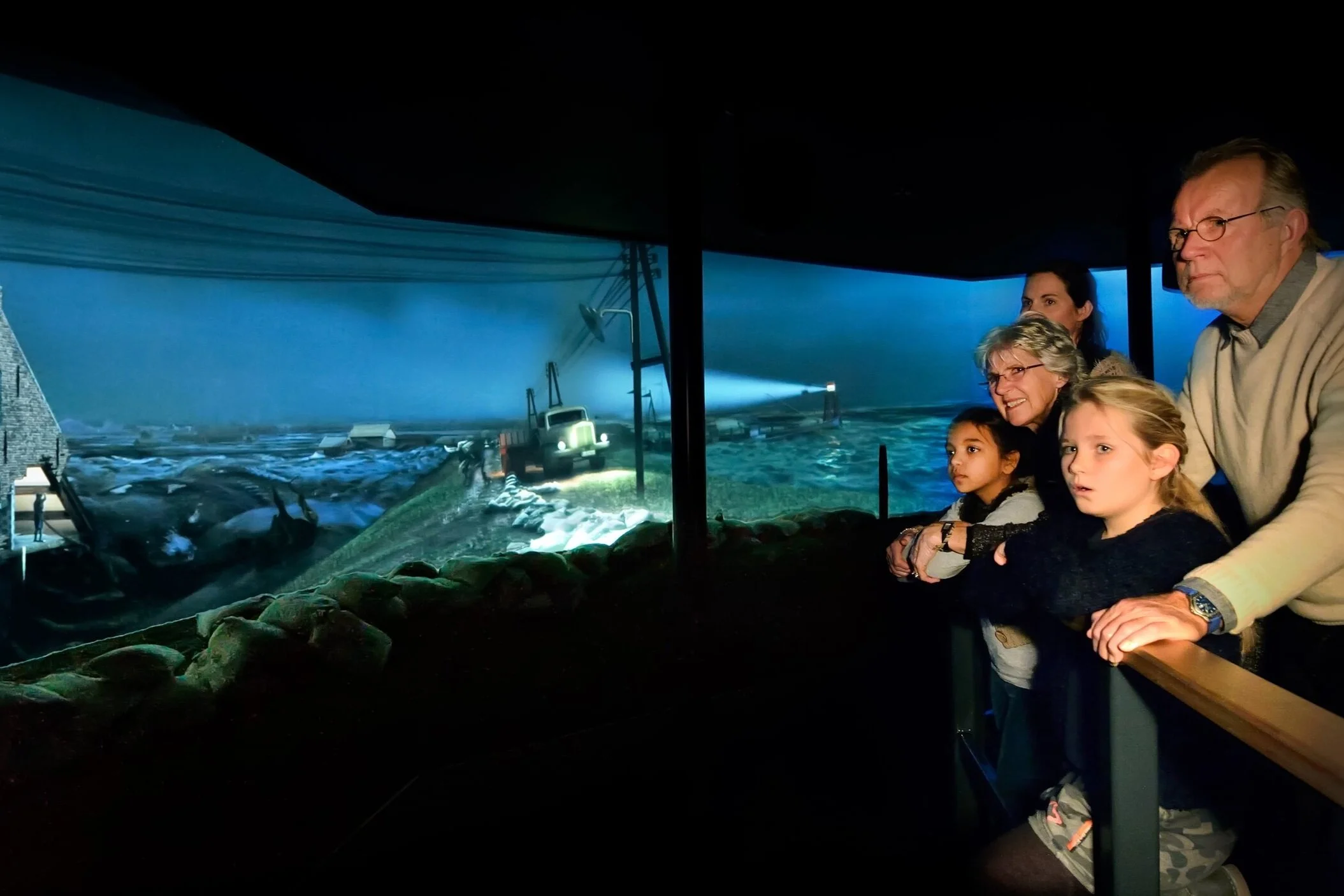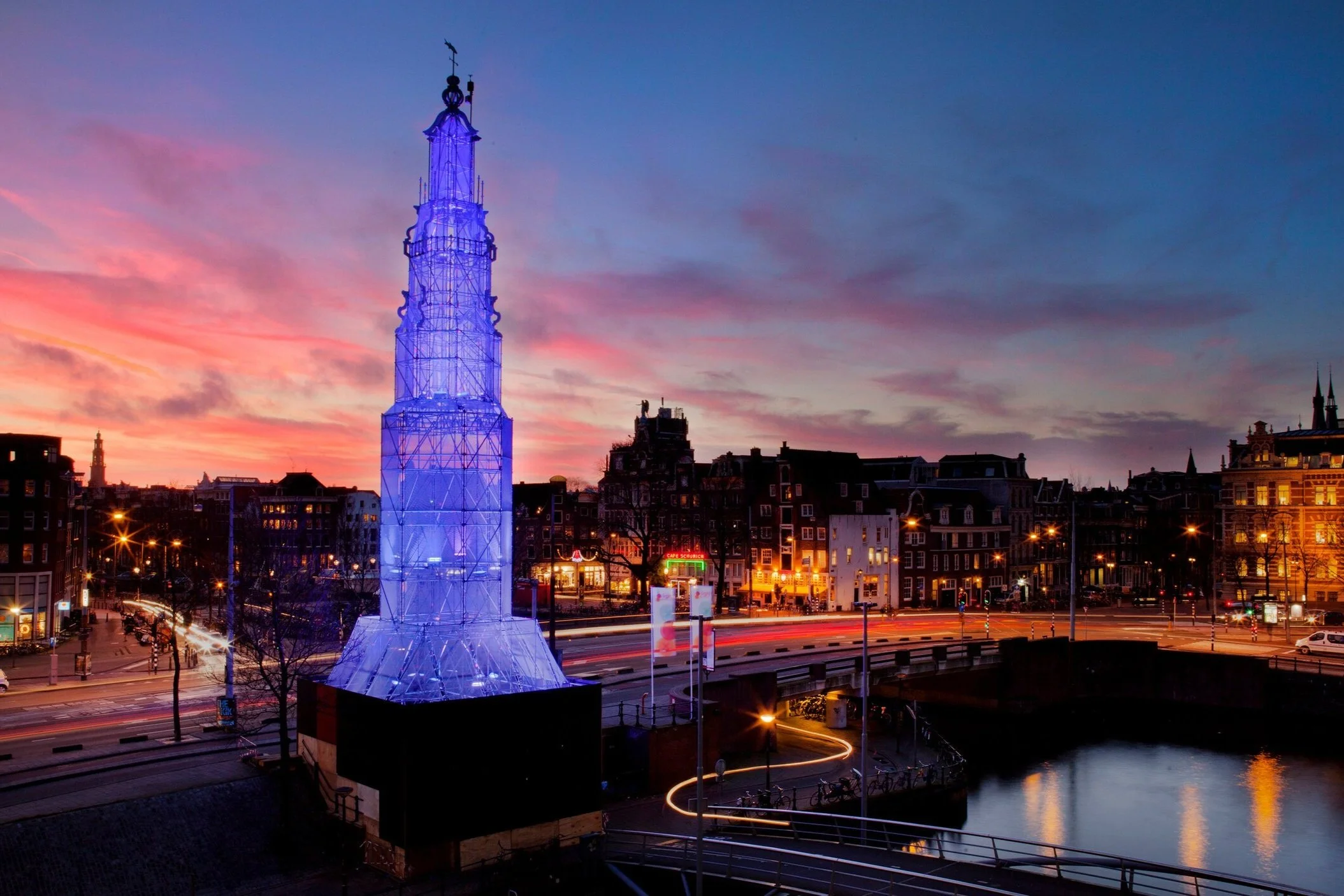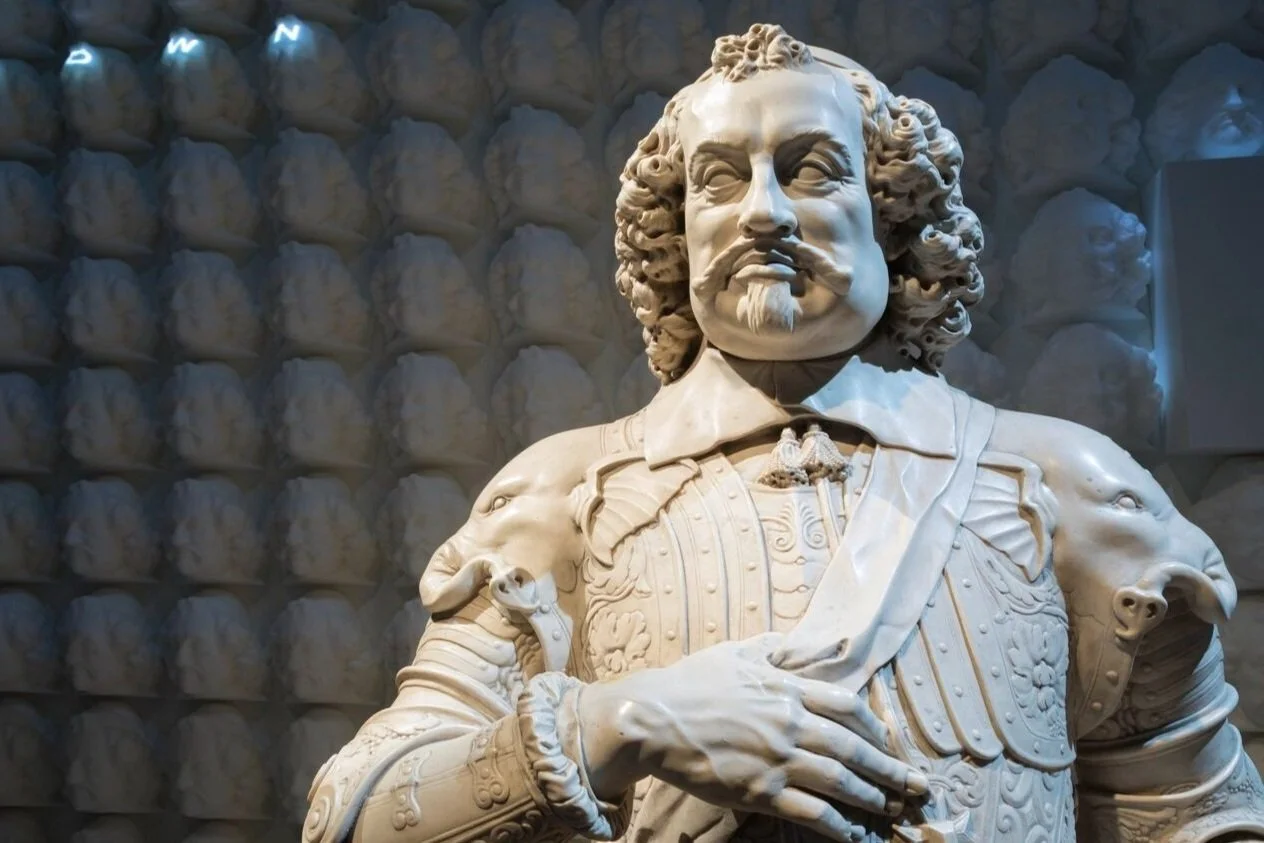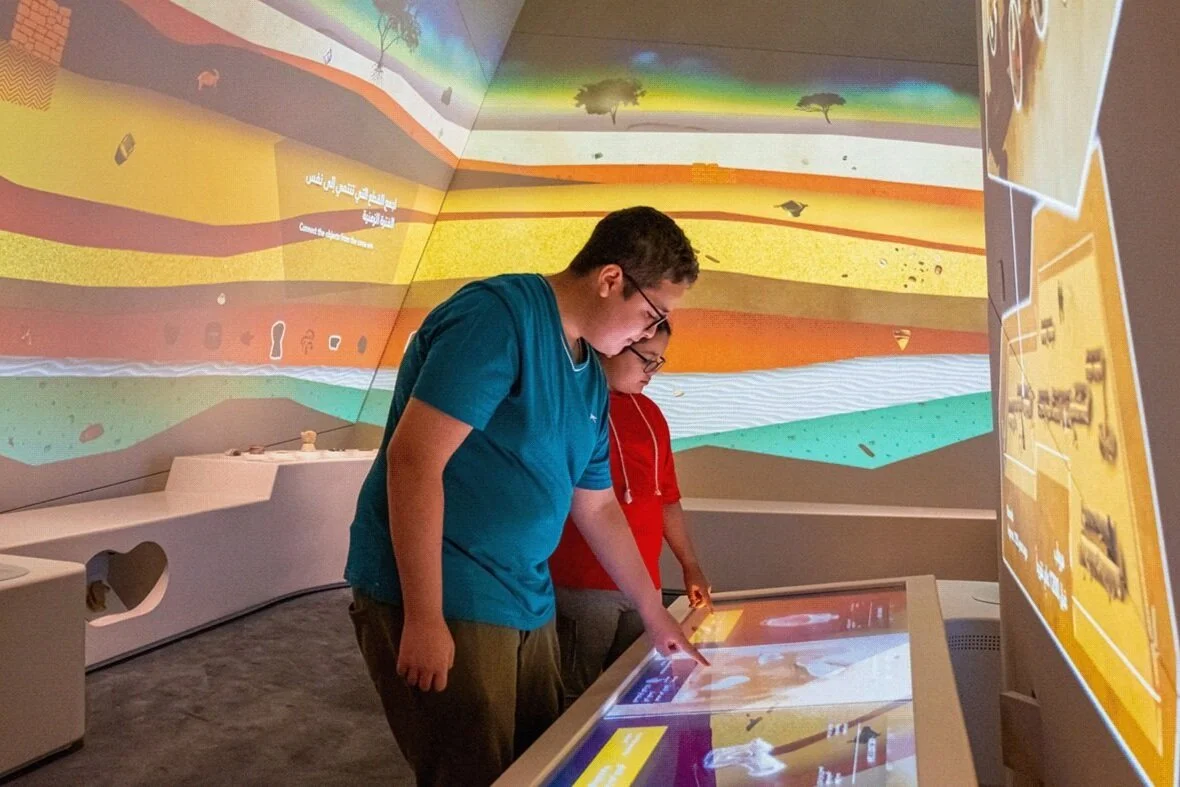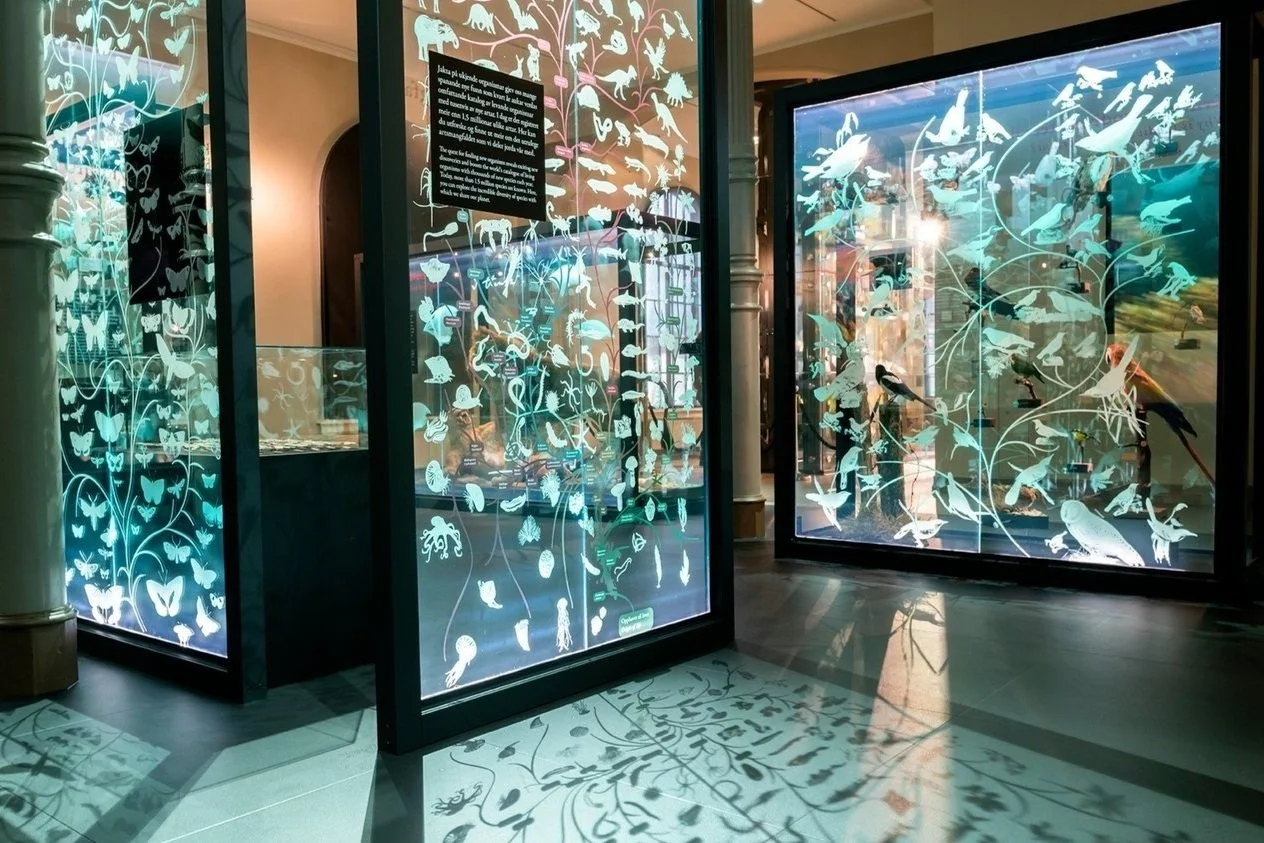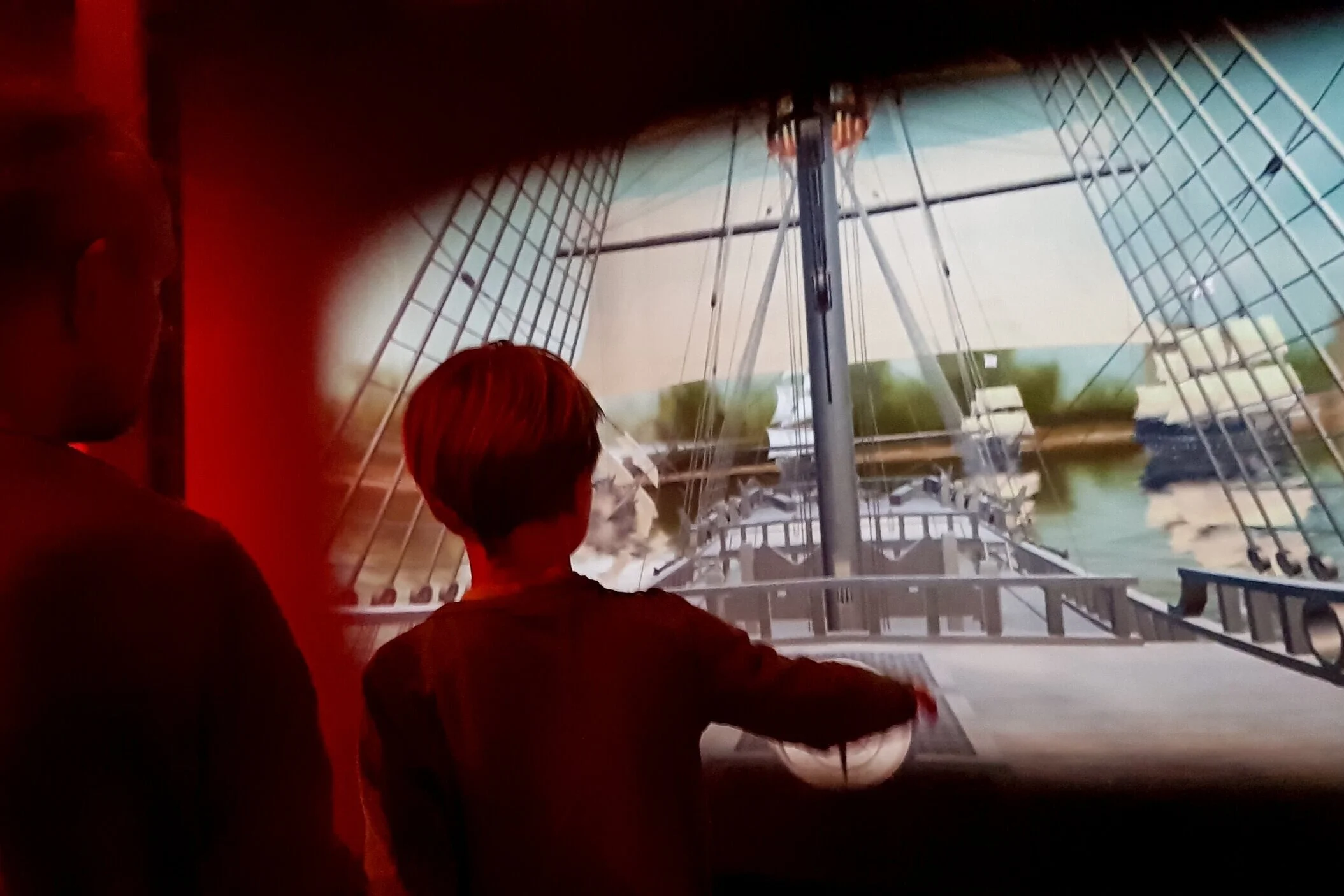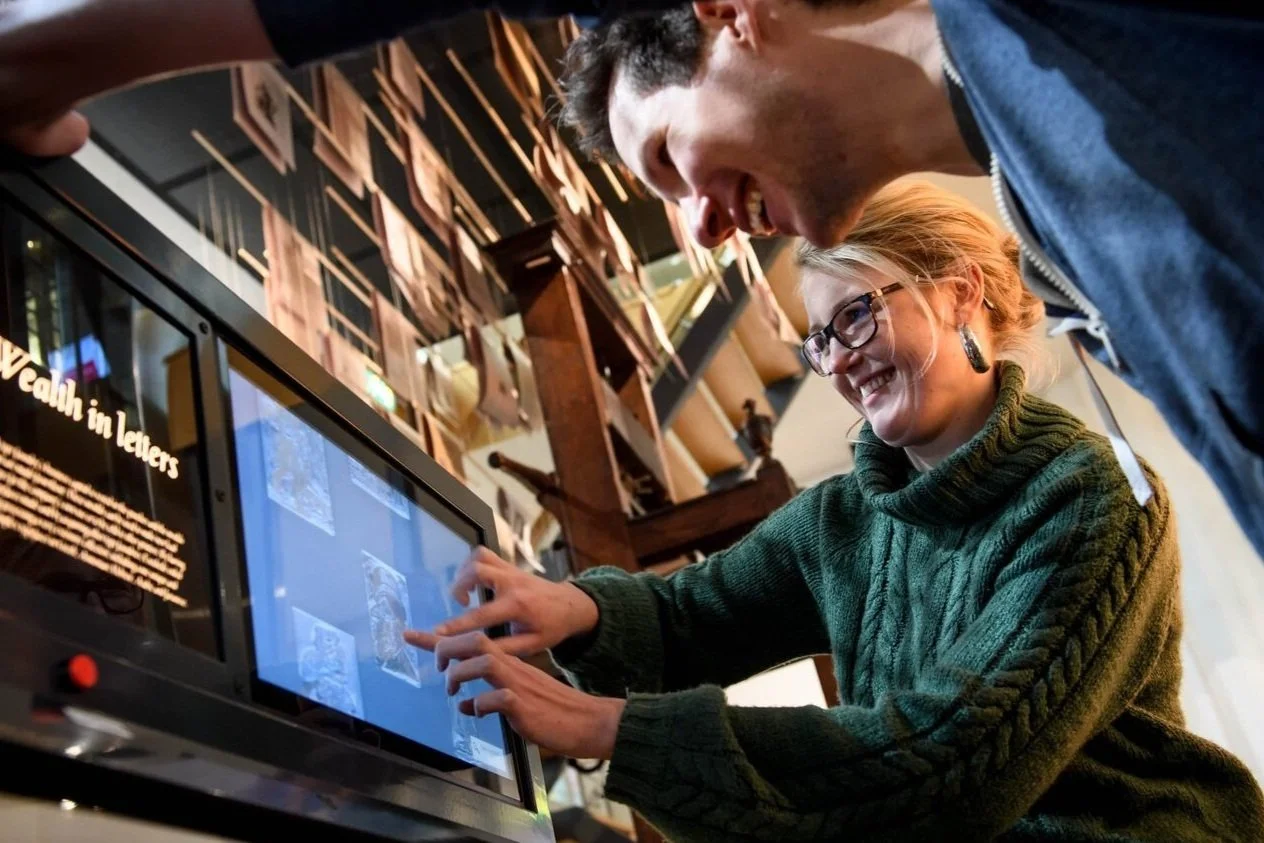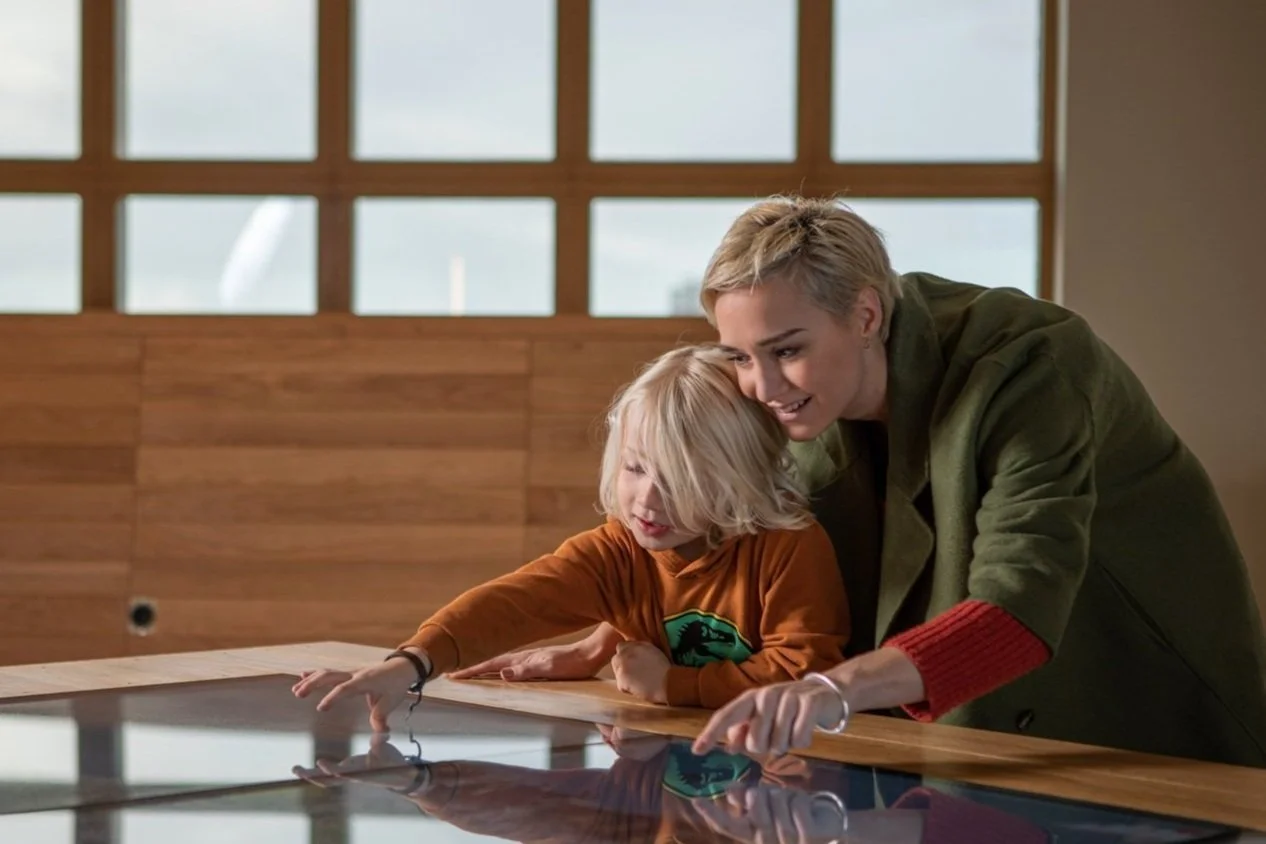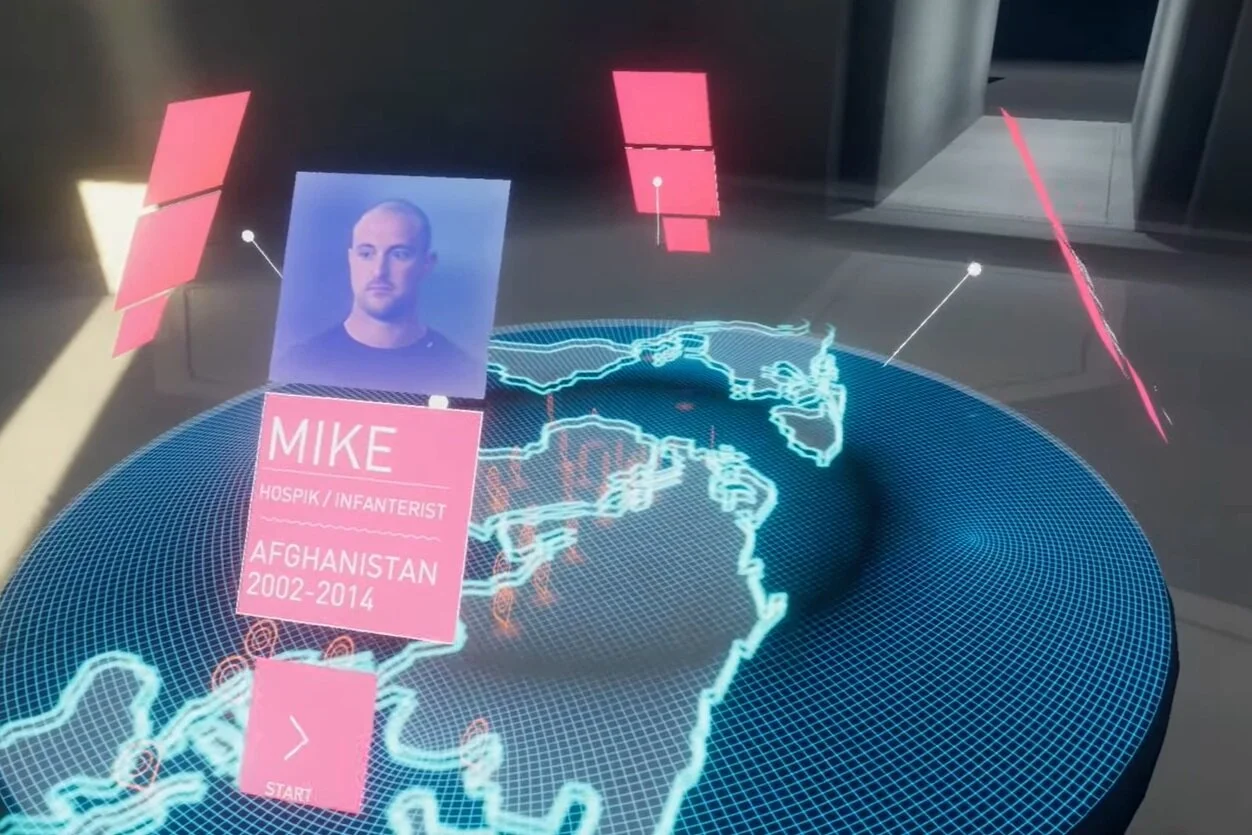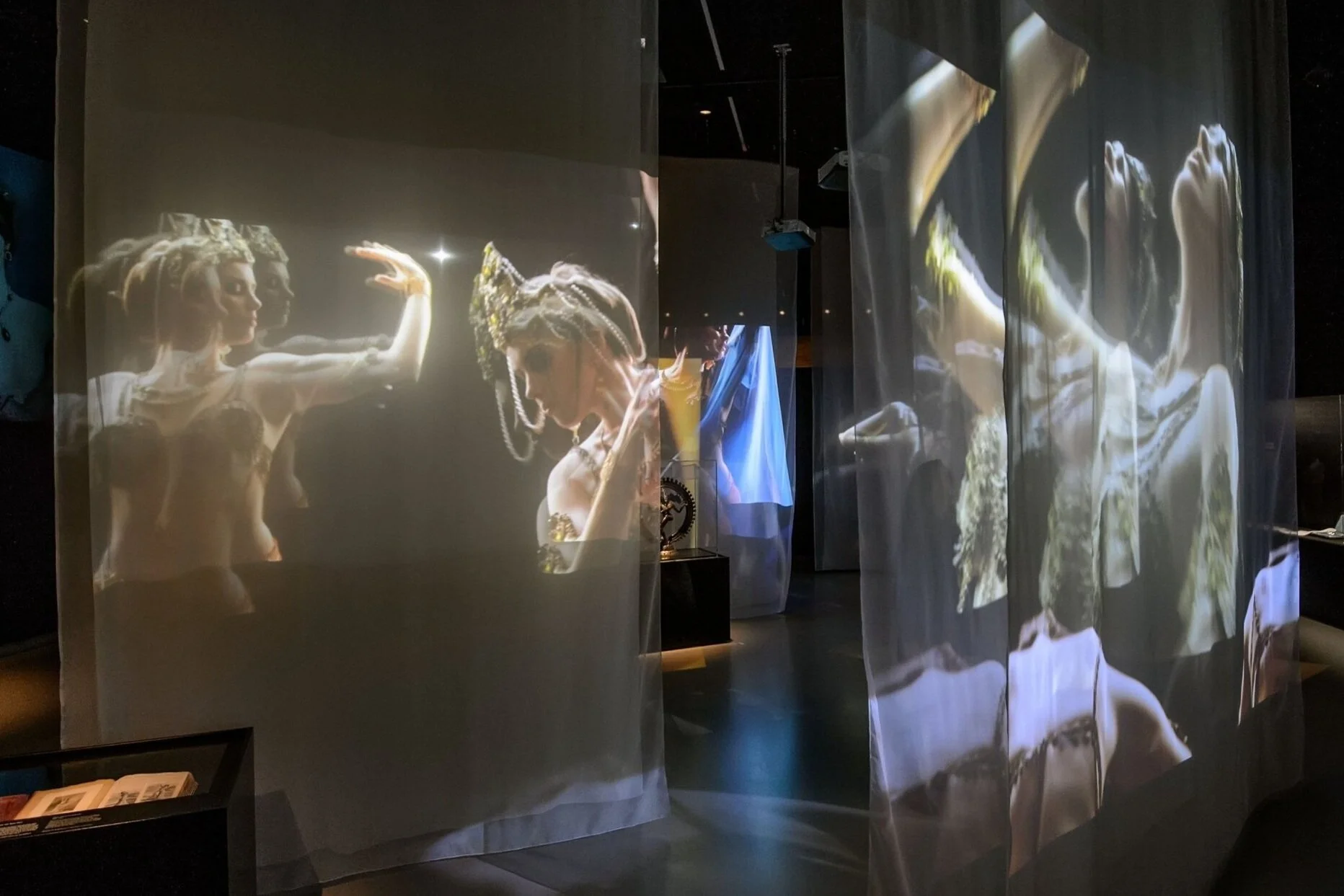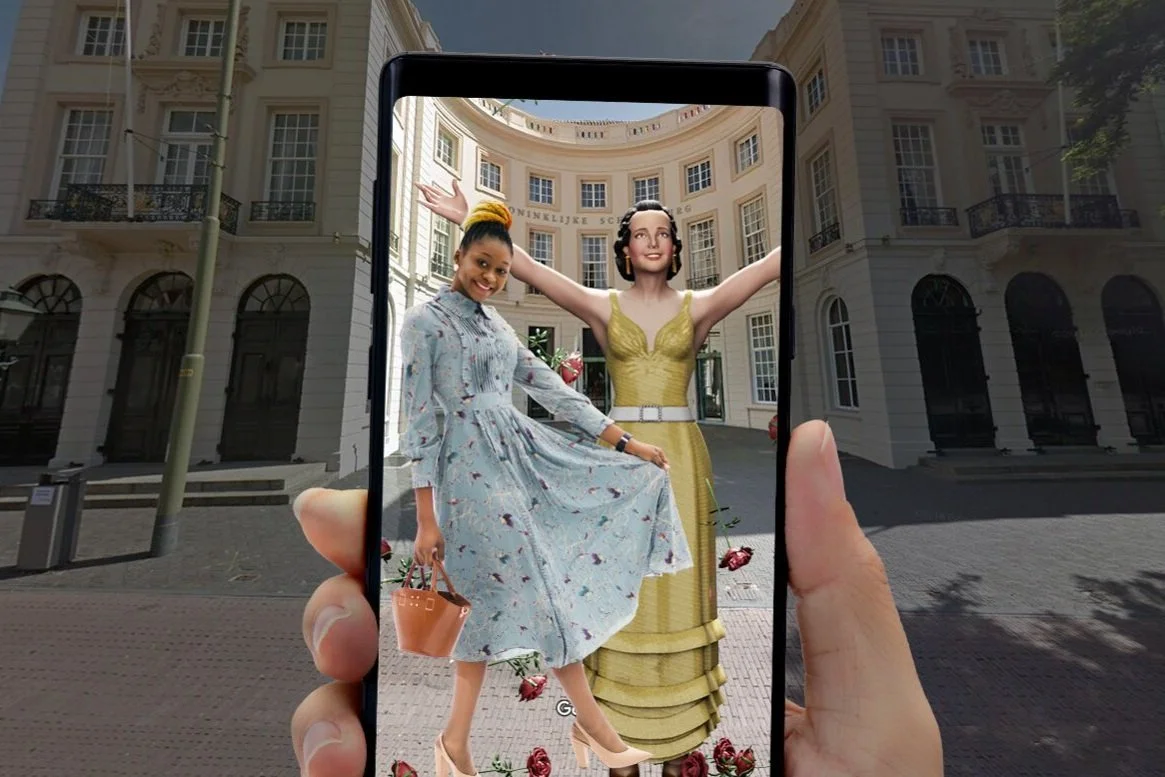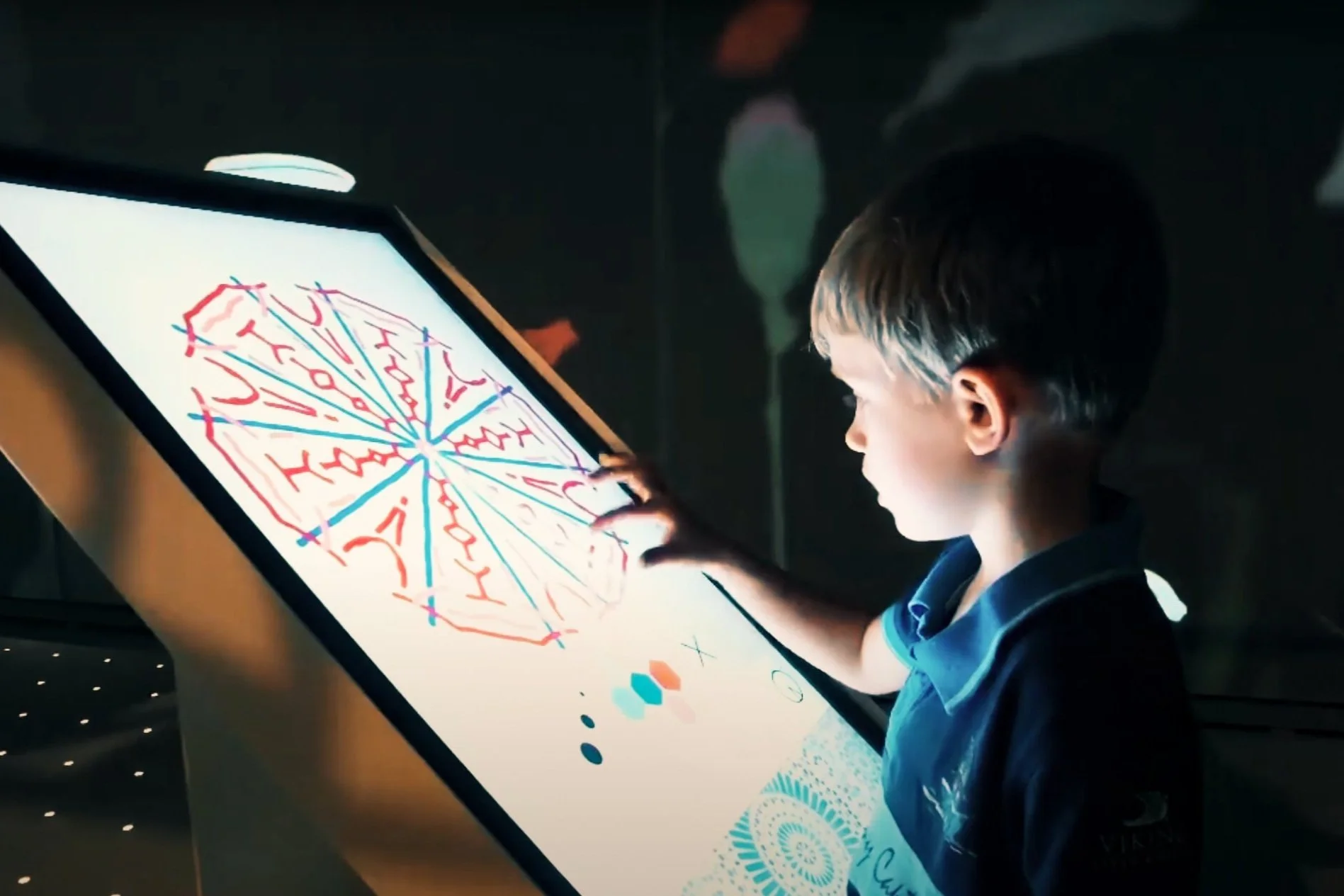Choosing the right type for your story
A successful exhibition is one whose story touches visitors. Studio Louter uses the Seven Types to choose the right medium for communicating every story. Sometimes you need to pull out all the stops and bring in the crowds. Other times you want to dive deep, with no distractions.
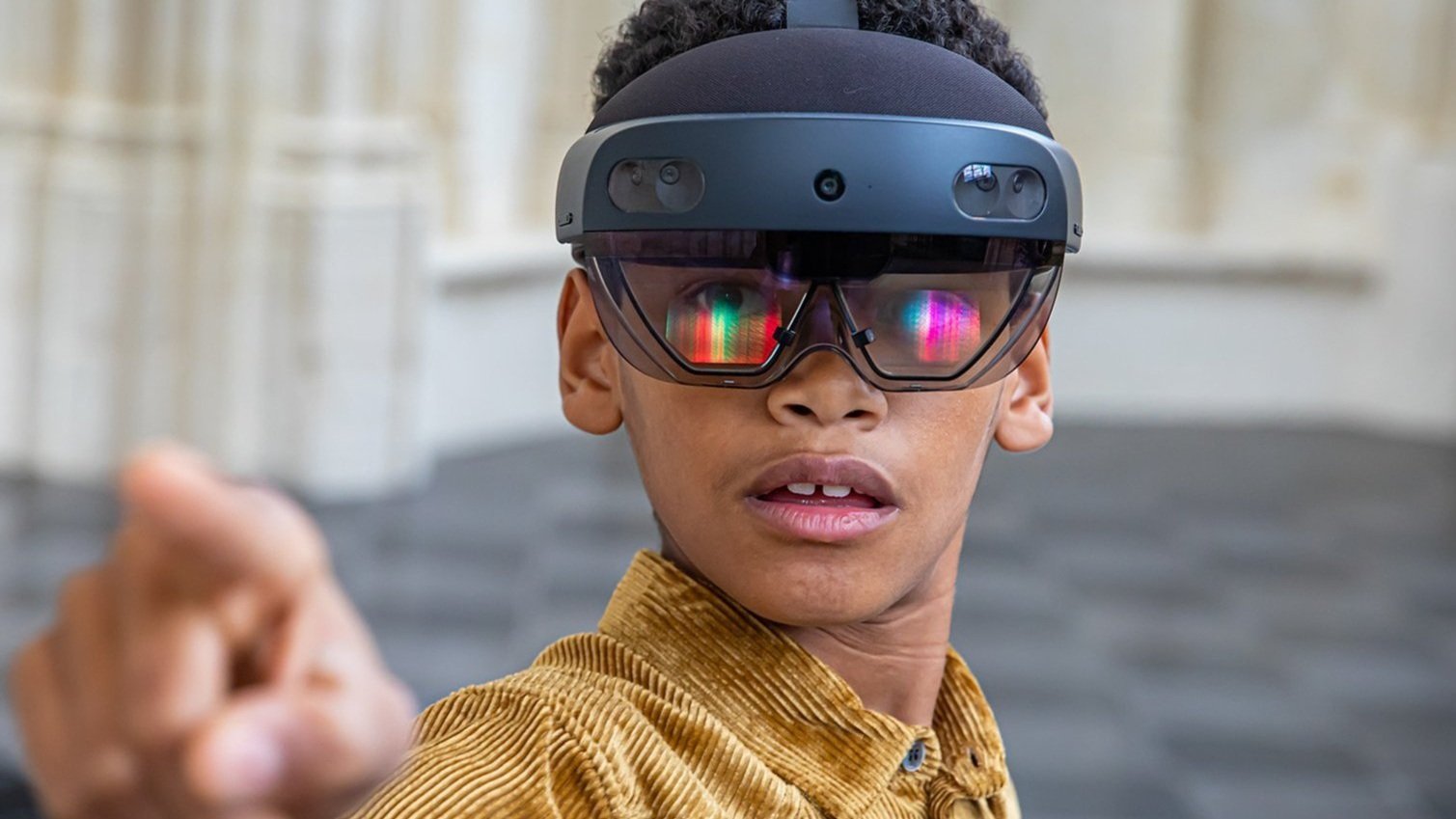
The Seven Types
A stone cup, a rusty sword, an old building. A historical or scientific object only takes on relevance once you know its significance – when you discover that thanks to that cup we know who lived here centuries ago, or you find out what battle that sword was used in, or learn what happened in this building. It’s when you understand their stories that objects become truly interesting.
There are lots of ways of communicating a story. You can tell it through a building, an exhibition design, an arrangement of objects. Or you can tell it through media – films, interactives, experiences. And you can make visitors think, get them moving, or intensify a feeling.
To help choose the right medium for your story, Studio Louter has developed a guide to the seven types.
Of course, the first step in choosing a type is to determine your exhibition’s narrative. What story exactly do you want to tell? And which emotion goes with it? Using our Emotion Design method, we’ll work with you to determine the answers to these complex questions. And together we’ll choose the type that best suits your story and your visitors.
Each of the Seven Types has its own purpose, special features, particularities, strengths, and effects. It all depends on the intended audience, interaction, and time required, the level of knowledge assumed, and the environment where the installation will be placed.
Get to know the Seven Types and discover how we use them.
Type 1: The Crowd Puller
A Crowd Puller is a big installation that constitutes a reason in itself to come to the museum, it is therefore for a broad audience and oriented towards a group dynamic. No prior knowledge necessary. This type can stand alone, is spectacular, and invites visitor interaction. That is why a big budget is required. Its uniqueness guarantees everyone will remember it.
Eye of the storm
The clock ticks. A child sleeps. A storm howls. Then the window smashes and all hell breaks loose. At Deltapark Neeltje Jans, visitors step into a 3D panorama and find themselves in the middle of the 1953 flood.
A lost tower rises again
Central Amsterdam’s lost 17th-century Haringpakkerstoren briefly reappeared at its original size. The illuminated tower was a major eye-catcher during the Amsterdam Light Festival.
Luminous love
‘Did you ever have to live without the love of your life?’ A storybook son et lumière show projected on the exterior wall of Middachten Castle tells the chatelaine’s dramatic love story.
Type 2: Setting the Scene
A Setting the Scene installation makes it clear at a glance what an exhibition’s all about, no interaction needed. As the gateway to a show, it can be grand and aimed at a broad audience. As part of the whole, it serves to provide context – a portrait of an era, for example. Then it’s ‘contextual wallpaper’ and it can be unobtrusive.
The Johan Maurits debate
After the Mauritshuis removed a bust of Johan Maurits from the foyer, Twitter blew up. At the beginning of the exhibition, visitors see the public debate erupt behind the sculpture.
Playing archaeologist
In the National Museum of Qatar, visitors move through a contextual backdrop. They always know where they are, whether it’s the Persian Gulf or an archaeological dig in the desert.
Forest of life
Without biodiversity there would be no life. At the University Museum of Bergen, visitors wander through a luminous wood as they learn about nature’s complex system of interdependencies.
Type 3: The Educator
We learn by doing. The Educator puts visitors to work, alone or in a group. This installation type uses an activity to explain a principle. The learning aim is obvious right away, instructions take 30 seconds and the total interaction time is 10 minutes. An Educator may be a digital game or a physical one, and it offers a reward. It can be linked to a teaching programme.
Tales told by children
At Museum Rotterdam ’40–’45 NOW, kids tell stories from wartime. At a digital table full of old objects, they create presentations. In this way, they pass the stories of the past on to a new generation
Getting to know the port
‘Amsterdam Port & City’ looks at the love-hate relationship between Amsterdam and its port. How much do visitors really know about this lively place? They can test their knowledge in the ‘workshop’.
A mighty machine
The human body is a powerful, highly evolved machine. By playing the games in the Gallery of Humankind, visitors can find out how their bodies work and learn about areas and activities of the brain.
Type 4: The Entertainer
Visiting an exhibition can be hard work. One means of breaking the rhythm: an installation that’s enjoyable while sticking to the overall theme. An Entertainer might provide a passive experience – a chance to relax and watch or listen, for example. Or it can invite visitors to get active and do something fun. It is short and easy to engage with.
Taking the helm
Historic sea battles come to life at the Navy Museum in Den Helder. Visitors sail along in a sloop to the fort at Sheerness and send the mightiest English warships up in flames during the Raid on the Medway in 1667.
Making your own money
The Noord-Hollands Archief honours Joh. Enschedé, printer of banknotes and security documents. Visitors can design their own currency and discover the craftsmanship hidden within everyday objects.
Audible witness
For centuries, the ringing from the belfry gave rhythm to the days in Monnickendam. The carillon room provides a glimpse of history and challenges visitors to play the bells like a real carillonneur.
Type 5: The In-Depth
An In-Depth installation is for advanced visitors with prior knowledge: extra information is provided, connections are made or additional objects, film and audio are offered. Visitors can start or stop at any time. The In-Depth is the most common type found in museums. It doesn’t have to be innovative; what matters is accessibility of content. But it should be selective, not an endless sea of information!
Antwerp past and present
At Het Steen, visitors learn about Antwerp by following an interactive experience trail. They can choose an easy or in-depth approach. A digital table transports them back through the centuries to the old city.
The power of a memory
More than 100,000 veterans living in the Netherlands today risked their lives for peace and safety. The Nederlandse Veteranendag foundation lets visitors step inside their memories through a HoloLens.
A planet teeming with life
The earth teems and blooms with life. At the Museum of Natural Sciences, visitors wander through the apparent chaos of our planet. Interactive screens allow them to learn about interdependencies in nature.
Type 6: The Dream Machine
The Dream Machine is an evocative installation that puts visitors in a state of wonder. Its form and effect make it an object in its own right, but always one that serves the museum story. It attracts attention and the longer you look at it, the better it gets. The Dream Machine is unique and affects visitors’ emotions – they’ll still be talking about it when they get home.
Seeing inside your own arm
Visitors to the Rijksmuseum Boerhaave learn to look at science differently. In a projection about the first time a surgeon ever cut into a human body, your own arm plays the starring role.
Like a movie
The Fries Museum’s exhibition on Margaretha Zelle is structured like a film. Each room represents a scene from her life, from a police interrogation to the climax: an illusion of Zelle dancing as Mata Hari.
All the languages in the world
The Lân fan Taal festival celebrated 6,720 languages, including Frisian, slang, braille, sign and body language. Visitors played with patterns to explore what language really is: code, emotion, identity, your own reality?
Type 7: The Link
The Link is a physical or digital installation that encourages visitors to communicate with the museum, each other, or the world outside. They’re invited to record a message, leave an opinion, vote, or post on social media. So museum visitors’ voices are heard inside and outside the building. The Link is often the last element in an exhibition.
Selfies with history
Walking through the Museum Quarter of The Hague, visitors meet historical figures. Thanks to AR, they can pose for a picture with Mozart or help King William I carry a painting into the Mauritshuis.
Shine like a pearl
Young visitors to the National Museum of Qatar move through the building, playing as they go. Learning alternates with lighter moments, like a photo op that lets you pose as a pearl in a giant shell.
Making and sharing patterns
Patterns form the basis of much Islamic art, as kids can discover at the Louvre Abu Dhabi. Visitors can create geometric flowers, then share their designs and inspire each other.
What’s your type?
Would you like to find out how the Seven Types can help your museum tell an unforgettable story?
Contact Sterre:
+31 (0)20 6702044
sterre@studiolouter.nl

